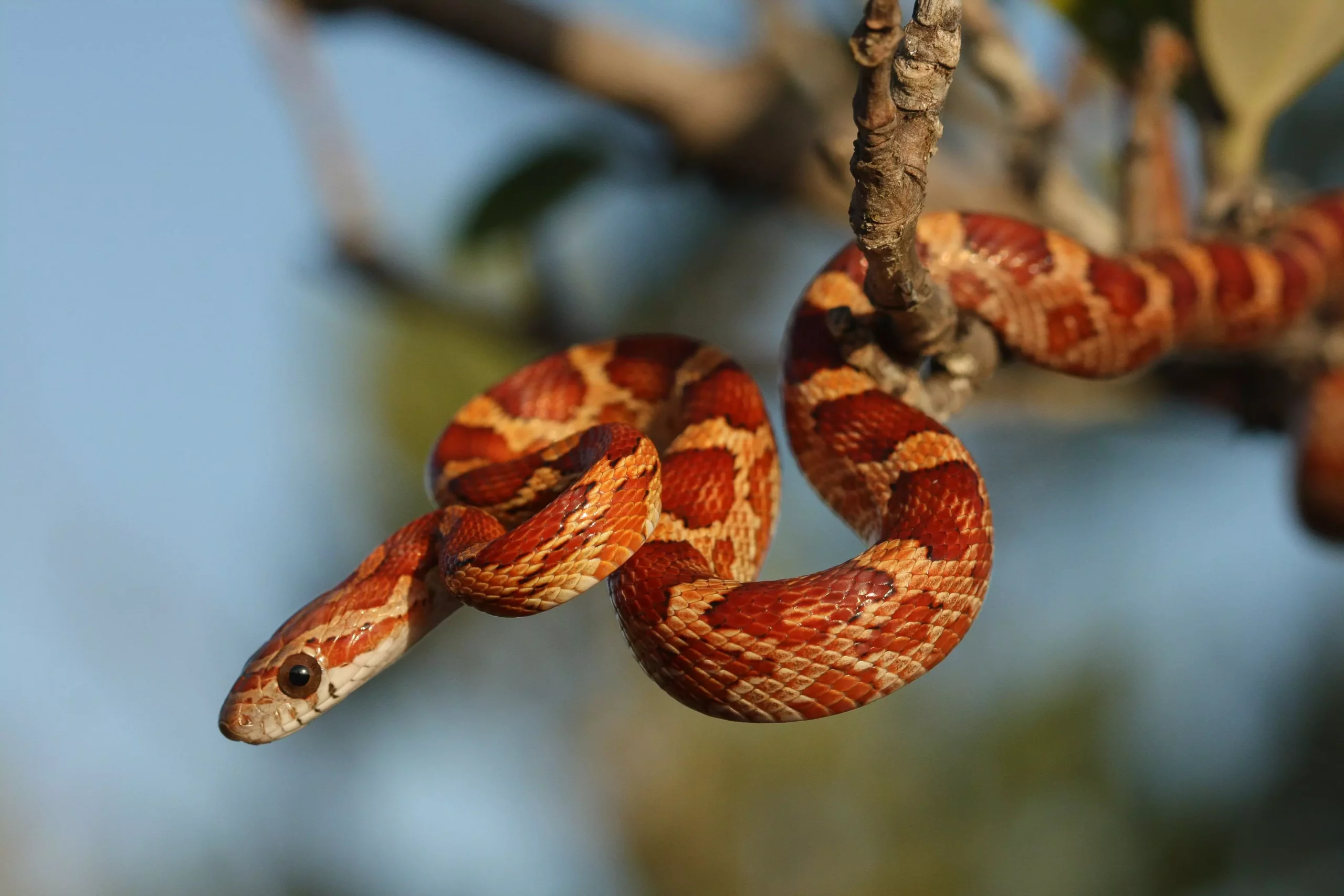The corn snake, scientifically known as *Elaphe guttata*, is a fascinating and popular choice among reptile enthusiasts. Originating from the southeastern United States, these charming serpents boast a diverse array of colors and patterns due to selective breeding, making them not only visually appealing but also excellent companions for both novice and experienced snake owners. Although initially named after grain storage facilities that attracted rodents—thus leading to their role as predators—corn snakes have transcended their origins to become beloved pets in homes around the world.
With an average adult length of 2.5 to 4 feet, corn snakes are manageable in size, occasionally growing up to 6 feet under optimal conditions. Their docile nature reinforces their reputation as ideal pets, particularly for first-time snake owners. However, while generally agreeable, corn snakes can display a defense mechanism that resembles that of rattlesnakes: when threatened, they may vibrate their tails in a show of intimidation.
An essential consideration in caring for a corn snake is ensuring a secure and comfortable environment. A 20-gallon long glass tank is often recommended, as it provides ample space for the snake to explore and hide while enabling good ventilation. It’s crucial that the enclosure has a well-fitted and clamped lid to prevent any escape attempts, as these snakes are notorious for seeking out weaknesses in their enclosures.
Inside their habitat, corn snakes thrive on having hiding spots. Simple objects like cardboard boxes can serve as effective hides, offering the security these reptiles need to feel safe. Additionally, incorporating pieces of bark or other substrates that allow for burrowing can enhance their well-being. One should ensure that hiding areas are available at both the warmer and cooler sides of the enclosure, as corn snakes are sensitive to temperature gradients.
Correct temperature regulation is vital. Employing an overhead heat lamp can help maintain the ambient temperature between 80 to 85 degrees Fahrenheit, with a basking area reaching 85 to 88 degrees. Nighttime temperatures should not fall below 75 degrees. Monitoring temperature with appropriate thermometers inside the tank is necessary to prevent overheating or undersupply of heat.
Maintaining adequate humidity is another key factor in caring for corn snakes, as they prefer an environment replicating the humidity levels of a typical household. A range of 35% to 60% is optimal, and a hygrometer can help monitor these conditions. Mistaking the tank or replenishing evaporating water dishes can support the snake’s hydration needs, especially before shedding periods when they may seek out more moisture.
As obligate carnivores, corn snakes thrive on a diet of prey items that correspond to their size. In captivity, feeding them pre-killed and thawed rodents, such as mice, is essential. Young or hatchling corn snakes should start with very small mice called pinkies, gradually increasing the size of the prey as the snake matures. Feeding frequency typically involves twice a week for growing snakes and once a week for adults.
It’s important to watch for signs that your snake is approaching a shed. During this time, typically indicated by cloudy eyes and dulling skin coloration, you may need to reduce feeding frequency. Ensuring that clean, non-chlorinated water is always available is crucial for hydration, digestion, and overall well-being. The water should be regularly changed, particularly if the snake uses it for defecation.
Health Considerations
Just like any pet, corn snakes can be susceptible to various health issues. Common ailments include mouth rot, fungal infections, and respiratory infections. Signs to watch for include inflammation around the mouth, excessive drooling, changes in skin color, and open-mouth breathing. It is vital for snake owners to seek veterinary care from professionals experienced with reptiles when any of these symptoms appear.
Choosing a healthy corn snake when purchasing is also paramount. Captive-bred snakes are generally recommended due to their hardiness and adaptability. Look for snakes that have clear eyes, clean cloacal regions, and show no signs of external parasites like mites or ticks.
The corn snake is a wonderful option for anyone interested in keeping a pet reptile. Their spectacular colors, docile temperament, and manageable size make them an attractive choice for both beginners and seasoned herpetologists. By providing a secure habitat, maintaining proper temperature and humidity, feeding appropriately, and ensuring regular health checks, owners can enjoy a fulfilling relationship with this captivating species for many years. If you’re considering a pet snake, the corn snake could very well be the perfect match for you.


Leave a Reply